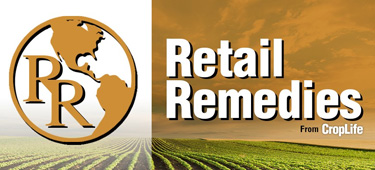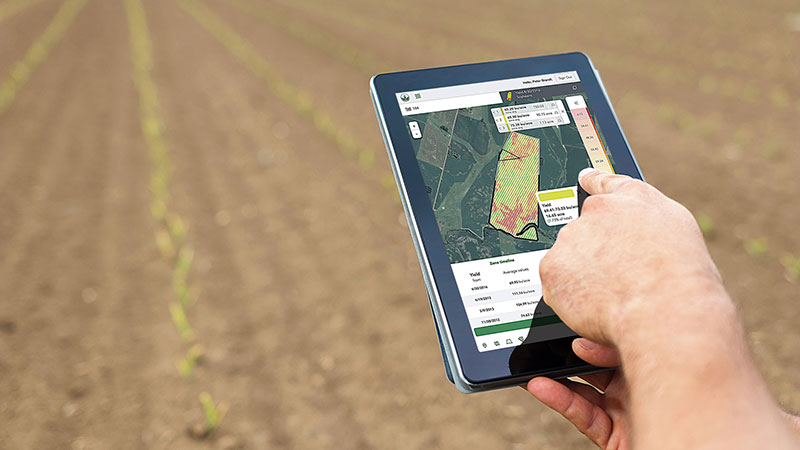Retail Remedies: What a Difference a Decade/Year Makes for Biofertilizers
 Editor’s note: This article is part of CropLife’s new series called Retail Remedies. In Retail Remedies content, we offer solutions and strategies for ag retailers to present to their grower-customers to make dealing with all the uncertainty of the 2022 planting season more manageable. This will include stories on product segments — like the biofertilizers feature below — that can help growers stretch their hard-earned dollars in this time of higher crop input costs.
Editor’s note: This article is part of CropLife’s new series called Retail Remedies. In Retail Remedies content, we offer solutions and strategies for ag retailers to present to their grower-customers to make dealing with all the uncertainty of the 2022 planting season more manageable. This will include stories on product segments — like the biofertilizers feature below — that can help growers stretch their hard-earned dollars in this time of higher crop input costs.

Among biologicals, biofertilizers are beginning to hit their stride in 2022, say market watchers. In fact, according to Jessica Stevenson, Senior Manager, Marketing for the Plant Nutrients Group at The Andersons Inc., interest in these products has grown along with the agriculture market’s movement towards sustainability.
“Interest and demand for biological products continues to increase with the adoption of sustainable management practices,” says Stevenson. “Growers are seeking solutions to not only improve nutrient efficiency but overall, improve their soil health. Soil microbes are an important key to a healthy functioning soil. These organisms help with cycling nutrients, mineralization of organic matter, and maintaining soil structure.”
Another thing that has helped the segment, says Gilman Farley, President of Biodyne USA, Partner-BW Fusion, has been how the overall marketplace has evolved, both in agriculture and for how biofertilizers are viewed. “Ten years ago, the skepticism and ‘snake oil’ mentality was prevalent, and biologicals and biostimulants were met with resistance at the farmgate level,” says Farley. “Ten years ago, everything was about increasing yield. It is not all about yield now. Yield improvements are certainly key but increasing farm efficiency and return-on-investment (ROI) is the central theme at this point.”
Bridging the Education Gap
Biodyne’s National Director of Agronomy Bodie Kitchel agrees with his co-worker’s assessment. In addition, he adds, getting the biofertilizers message across to the industry hasn’t hurt either. “Education of the biological space is the biggest component that will drive adoption, due to it still being looked at as somewhat of the unknown,” says Kitchel. “The industry has done a phenomenal job talking about soils as more one dimensional, from the chemical standpoint, and it’s to a point that most growers have accepted that logic. And as the biological companies continue to educate, you’ll continue to see more adoption.”
Of course, going into the 2022 growing season, another factor working in biofertilizers’ favor is the rising costs of traditional fertilizers. In many instances, traditional fertilizer segments have seen price increases trending 190% to 340% higher than they were just 15 months ago.
“With the growing trust and confidence in biofertilizers, plus the increased costs associated with traditional fertilizer regimes, we’re already seeing a significant uptick in adoption in 2022 and we don’t expect that to slow down anytime soon,” says Mick Messman, CEO at DPH Biologicals. “Even if prices come back down, the global fertilizer crisis has made farmers awfully nervous. They are starting to look at long-term solutions for lowering their dependence on fertilizer inputs and biofertilizers are an obvious alternative.”
In particular, says Messman, GROWMARK FS has been working with its SP-1 Classic biofertilizer for more than five years now with its corn and soybean grower-customers. “They have been really pleased with their results,” he says. “In corn, over a three-year trial, the company’s growers have averaged 7.6 bushels an acre more than the control when they used SP-1 Classic in-furrow at 1.5 gallons an acre.”
Furthermore, Hanan Dor, Chief Commercial Officer at Groundwork BioAg, foresees a bright future ahead for the biofertilizers segment. “In 2021, Groundwork BioAg saw incredible interest in and adoption of our mycorrhizal inoculants by large corn and soybean growers in the Midwest, Brazil, and around the world — now representing more than a million acres,” says Dor. “As more farmers seek alternatives to synthetic fertilizer and increased protection of their soil health, mycorrhizal inoculants stand out among other biologicals due their broad applicability and long-term ROI potential.”
See all Retail Remedies content here.






